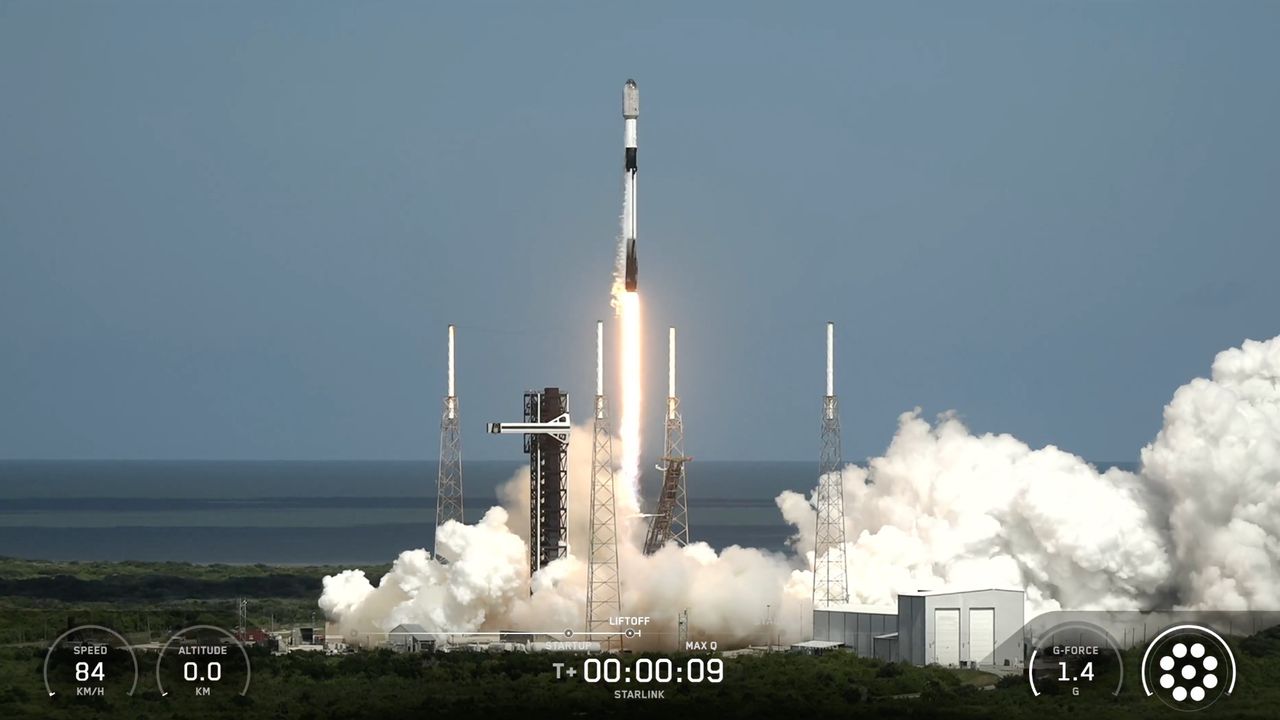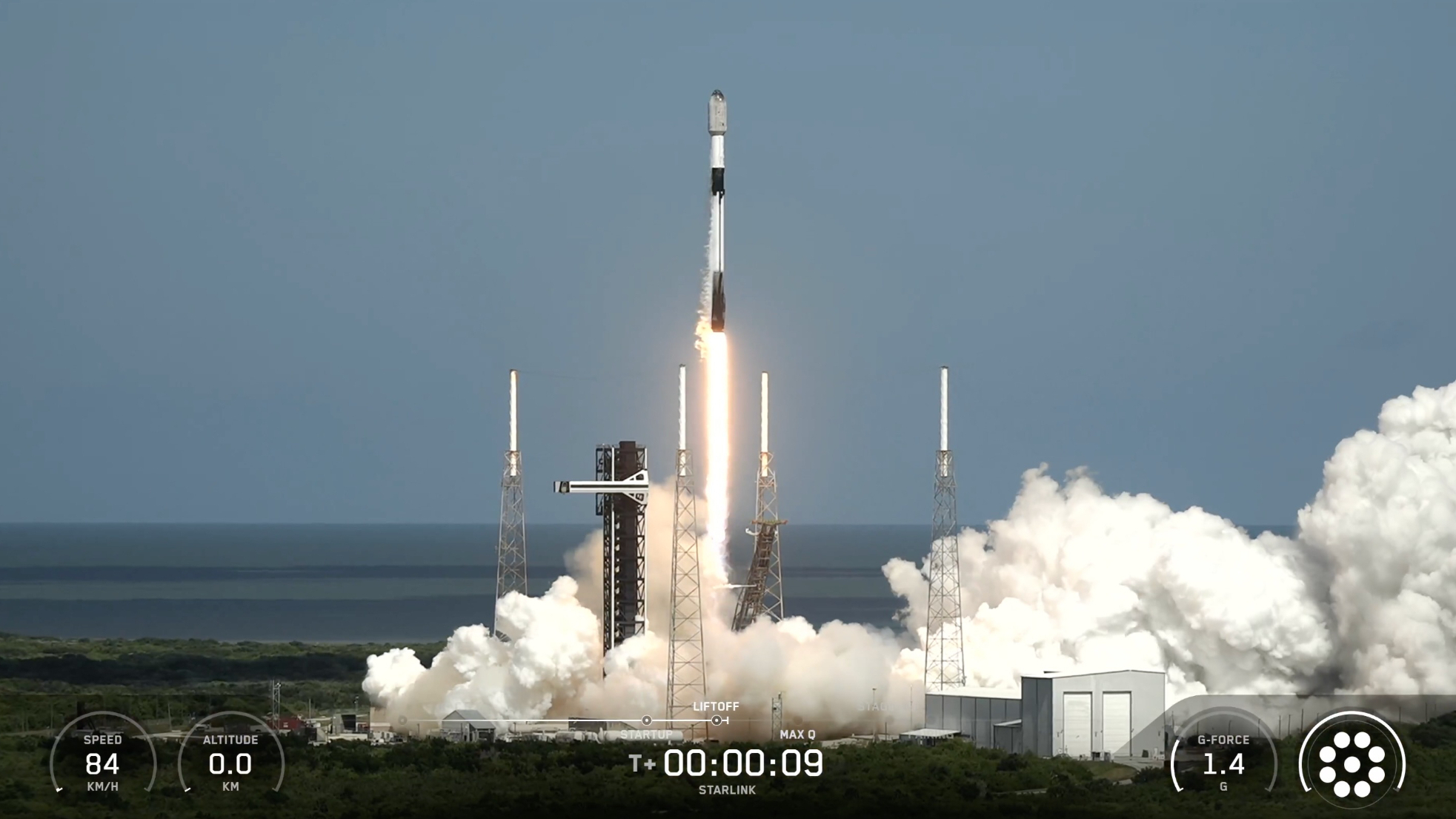
SpaceX notched a big milestone on a Falcon 9 rocket launch today (Oct. 19).
A Falcon 9 carrying 28 of SpaceX's Starlink broadband satellites lifted off from Florida's Cape Canaveral Space Force Station today at 1:39 p.m. EDT (1639 GMT).
It was the record-breaking 31st mission for this Falcon 9's first stage, a booster designated 1067.

Booster 1067 came back to Earth about 8.5 minutes after liftoff as planned today, wrapping up its 31st flight with a pinpoint landing in the Atlantic Ocean on the SpaceX drone ship "A Shortfall of Gravitas."
Such extensive rocket reuse is a core part of SpaceX's plan to lower the cost of spaceflight and increase its efficiency.
CRS-22 | Crew-3 | Turksat 5B | Crew-4 | CRS-25 | Eutelsat HOTBIRD 13G | O3B mPOWER | PSN SATRIA | Telkomsat Marah Putih 2 | Galileo L13 | Koreasat-6A | 19 Starlink missions
That already-successful strategy could take a big leap forward soon; the company is developing a giant, fully reusable rocket called Starship, which is designed to help humanity settle Mars. (The Falcon 9 and its close cousin the Falcon Heavy are only partially reusable; their upper stages are expendable.)
The Falcon 9's upper stage, meanwhile, hauled the 28 Starlink satellites to low Earth orbit today, deploying them as planned about 64 minutes after launch.
Editor's note: This story was updated at 1:49 p.m. EDT on Oct. 19 with news of successful launch and rocket landing. It was updated again at 5 p.m. ET with news of satellite deploy, and to correct an earlier version that claimed that this flight lofted the 10,000th Starlink satellite to space. That milestone actually came on SpaceX's second Starlink launch of the day, which launched from California.







